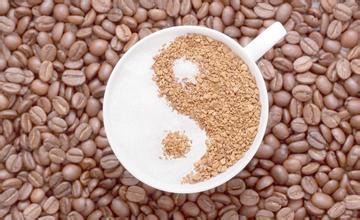Introduction to Hasunda Coffee Garden in Ecuador
According to Ms. Malena, Consul General of the Consulate General of Ecuador in Guangzhou, Ecuador is located in South America, and the equatorial line runs through the country, so it is also known as the "equatorial country". Its superior geographical location, fertile soil and special climatic conditions have created a superior natural environment for coffee bean cultivation. Most countries in the world are rich in only one kind of coffee beans. Ecuador, on the other hand, is one of the few countries in the world that can produce both Arabica and Robusta coffee beans. The Ecuadorian Coffee tasting, hosted by the Consulate General of Ecuador in Guangzhou, was recently held in the art cafe of the Guangdong Provincial Museum. Ms. Malena, Consulate General of Ecuador in Guangzhou, said that coffee buyers from Guangdong have gone to Ecuador to purchase coffee beans. Coffee lovers in Guangzhou will soon be able to taste the fragrant Ecuadorian coffee in the street cafes. The coffee beans produced in Ecuador's Galapagos Islands are organic coffee beans. Thanks to the unique ecological environment such as volcanic soil and microclimate, coupled with its lack of chemical fertilizers and pesticides, it is recognized as a natural green boutique coffee. This naturally grown coffee tastes mild, with a hint of flowers and fruit and caramel. It is understood that the Galapagos Islands are about 1000 kilometers away from the mainland of Ecuador and are located at the confluence of the eastern Pacific Ocean and the three major ocean currents. In 1978, the Galapagos Islands was declared a "World Natural Heritage site" by UNESCO. The archipelago is known as the "living Museum of Biological Evolution" and "the melting pot of marine life". Darwin's "theory of evolution" is inspired by organic beans, caramel-scented mountain beans and roses in the Galapagos Islands.
Mr. Veniso, champion of the 2014 Ecuadorian Coffee Competition, told reporters that some of the Ecuadorian coffee is espresso made from Ecuadorian alpine coffee beans. This coffee comes from a mountain area about 1000 to 2000 meters above sea level and has a mellow taste with aromas and sweetness of fruit, grass and chocolate. Some add mint grass from the Amazon to this espresso. Some add the Ecuadorian rose petals called "Rolls in the Rose" to the espresso. The coffee beans produced in Ecuador's Galapagos Islands are organic coffee beans. Thanks to the unique ecological environment such as volcanic soil and microclimate, coupled with its lack of chemical fertilizers and pesticides, it is recognized as a natural green boutique coffee. This naturally grown coffee tastes mild, with a hint of flowers and fruit and caramel. It is understood that the Galapagos Islands are about 1000 kilometers away from the mainland of Ecuador and are located at the confluence of the eastern Pacific Ocean and the three major ocean currents. In 1978, the Galapagos Islands was declared a "World Natural Heritage site" by UNESCO. The archipelago is known as the "living Museum of Biological Evolution" and "the melting pot of marine life", and Darwin's theory of evolution was inspired by the Galapagos Islands.
The addition of Gaoshandou to the rose is so amazing.
Mr. Veniso, champion of the 2014 Ecuadorian Coffee Competition, told reporters that some of the Ecuadorian coffee is espresso made from Ecuadorian alpine coffee beans. This coffee comes from a mountain area about 1000 to 2000 meters above sea level and has a mellow taste with aromas and sweetness of fruit, grass and chocolate. Some add mint grass from the Amazon to this espresso. Some add Ecuadorian rose petals called "Rolls-Royce in roses" to espresso, which tastes amazing.

Important Notice :
前街咖啡 FrontStreet Coffee has moved to new addredd:
FrontStreet Coffee Address: 315,Donghua East Road,GuangZhou
Tel:020 38364473
- Prev

Flavor and taste of Jamaican Coffee Manor Atlanta Manor
When it comes to Jamaica, everyone's eyes lit up immediately because it produced the best Jamaican Blue Mountain Coffee (Jamaica Blue Mountain) in the world. We absolutely believe that Jamaica Blue Mountain Coffee is the best coffee, its acid, sugar, alcohol and bitterness are well balanced, fragrant and smooth to drink, but its price is too high, although it is worth a try, there is no need to do so.
- Next

Costa Rican Coffee Manor introduction to the Goddess Manor West Valley-Tarasu
There are many excellent producing areas in Costa Rica, and the high-quality producing areas of Costa Rica have a common understanding of quality, that is, it requires the use of mature coffee fruits to ensure the production of high-quality coffee. Generally speaking, a large amount of water is used in the post-processing of picked coffee fruit, but the advanced production equipment in Costa Rica saves the use of water resources to the greatest extent.
Related
- Does Rose Summer choose Blue, Green or Red? Detailed explanation of Rose Summer Coffee plots and Classification in Panamanian Jade Manor
- What is the difference between the origin, producing area, processing plant, cooperative and manor of coffee beans?
- How fine does the espresso powder fit? how to grind the espresso?
- Sca coffee roasting degree color card coffee roasting degree 8 roasting color values what do you mean?
- The practice of lattes: how to make lattes at home
- Introduction to Indonesian Fine Coffee beans-- Java Coffee producing area of Indonesian Arabica Coffee
- How much will the flavor of light and medium roasted rose summer be expressed? What baking level is rose summer suitable for?
- Introduction to the characteristics of washing, sun-drying or wet-planing coffee commonly used in Mantenin, Indonesia
- Price characteristics of Arabica Coffee Bean Starbucks introduction to Manning Coffee Bean Taste producing area Variety Manor
- What is the authentic Yega flavor? What are the flavor characteristics of the really excellent Yejasuffi coffee beans?

